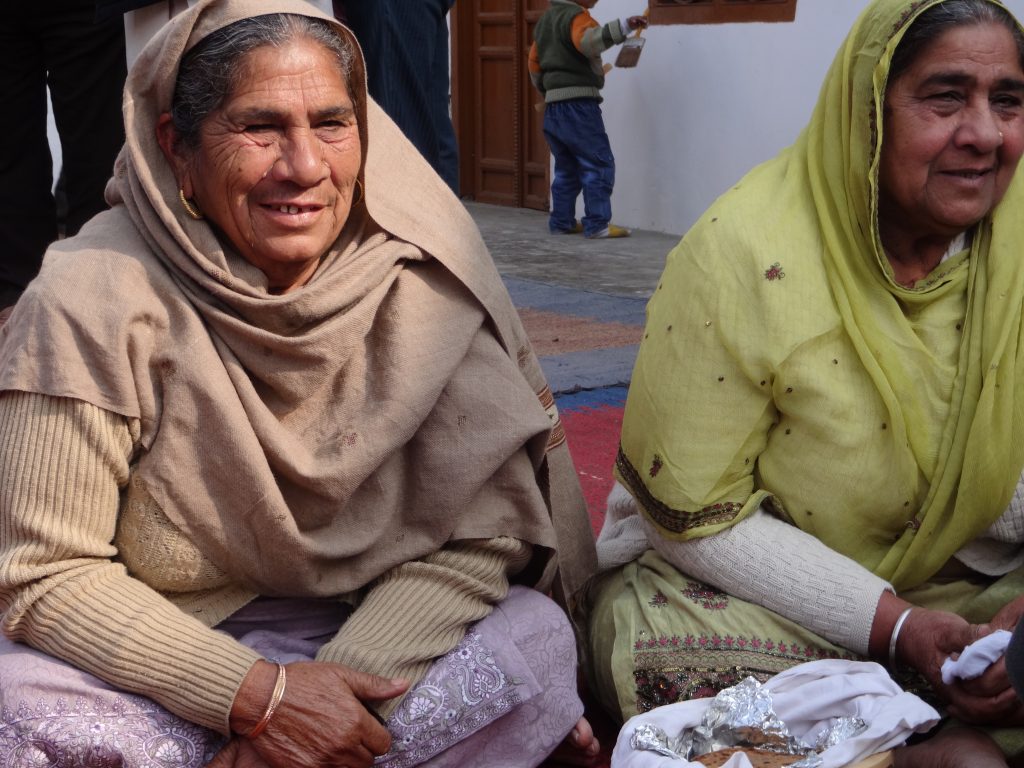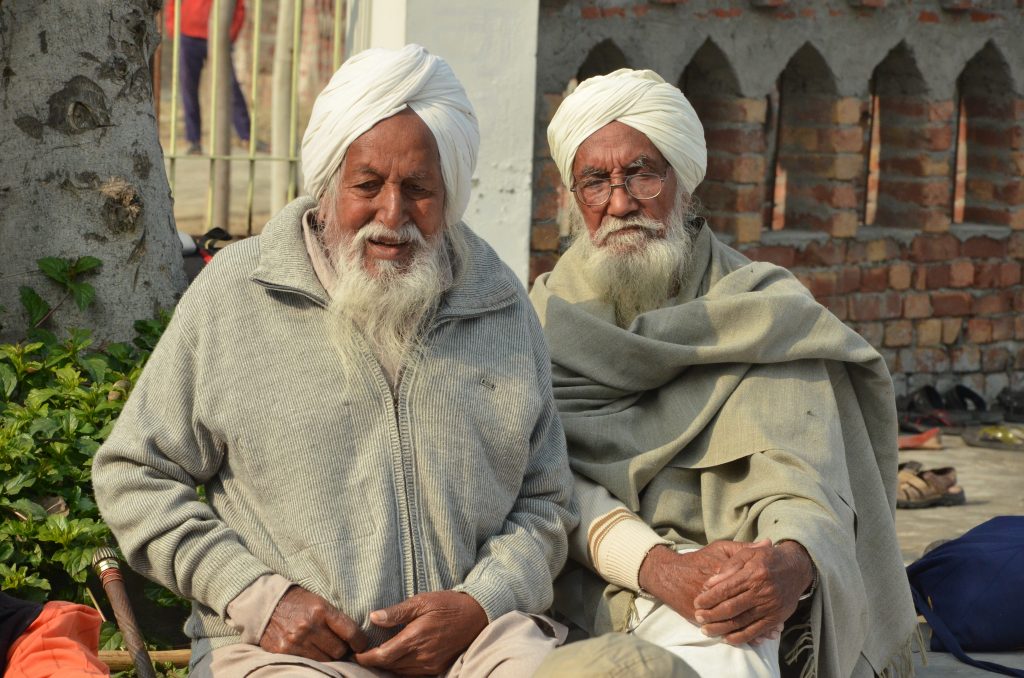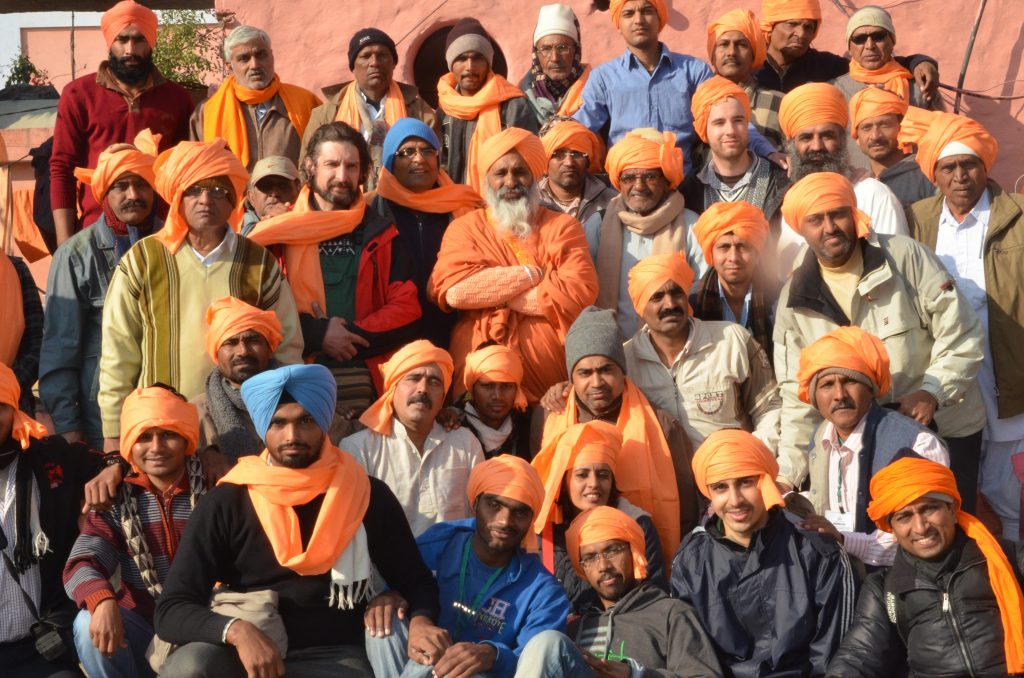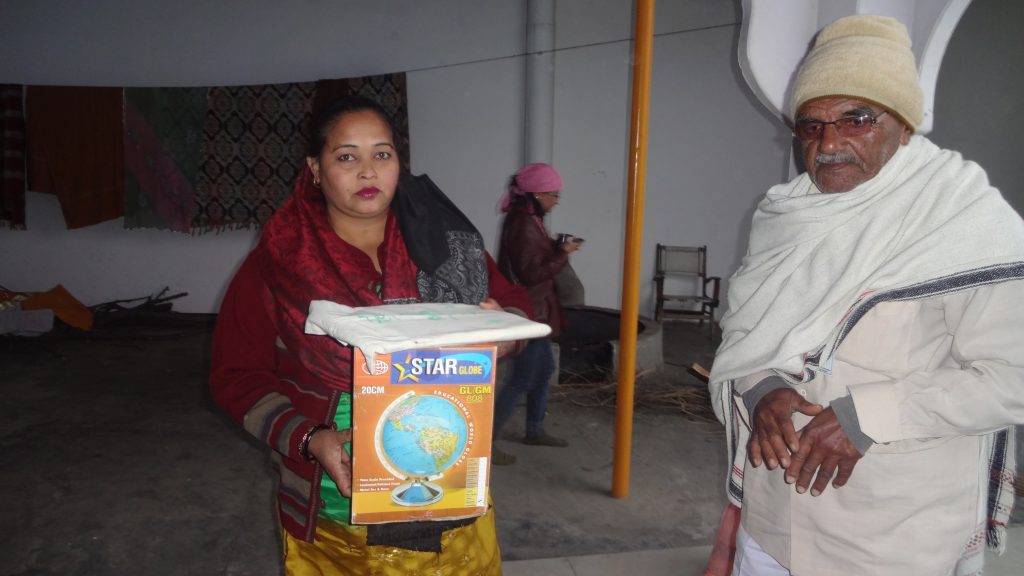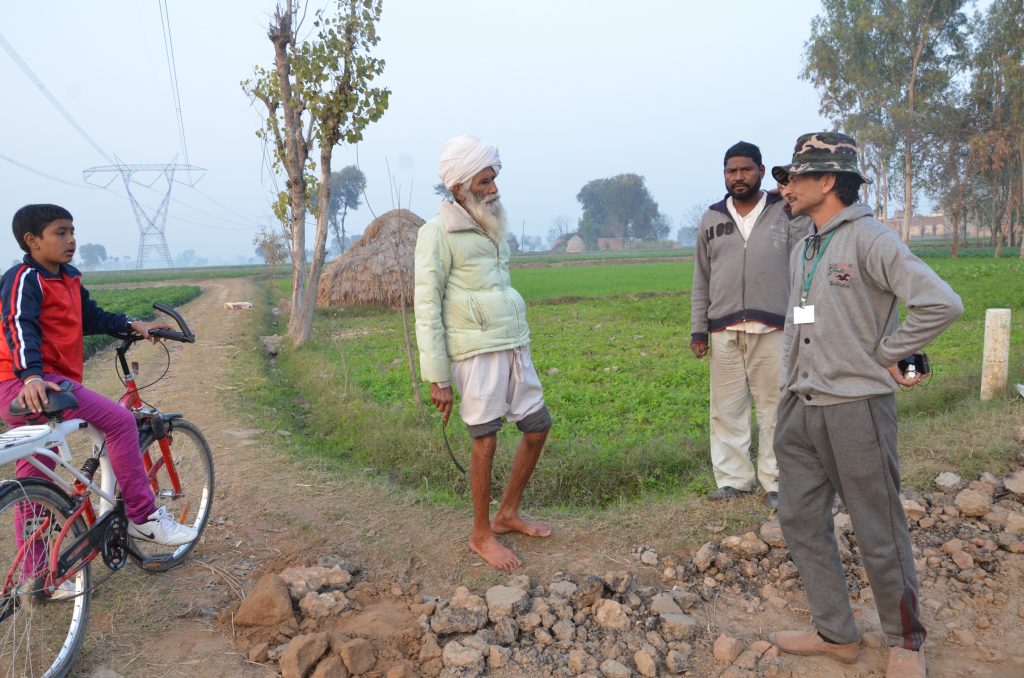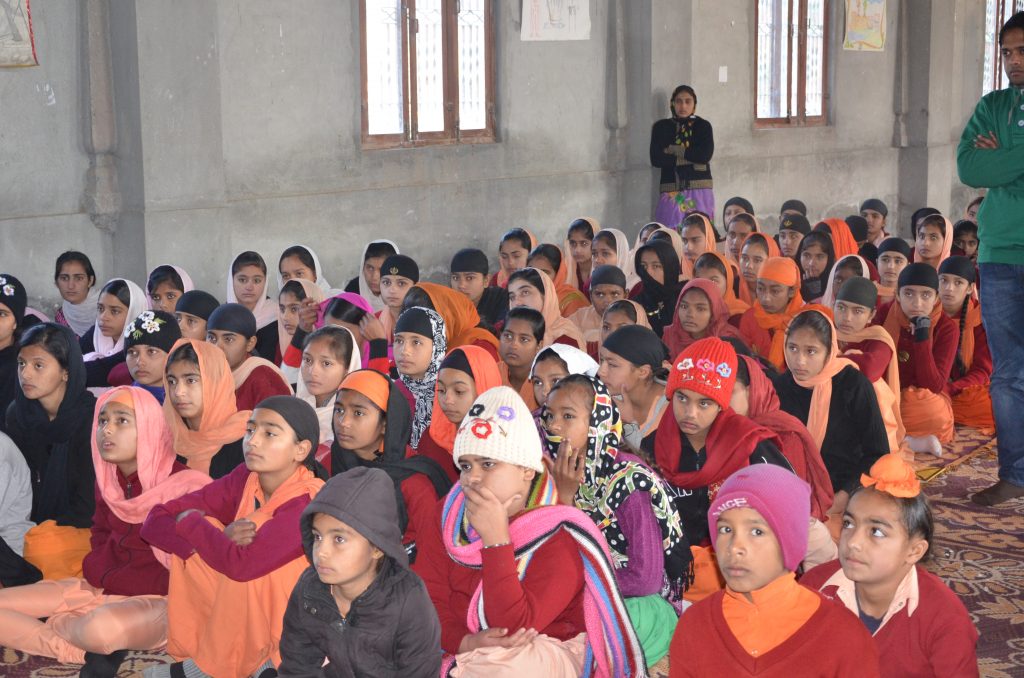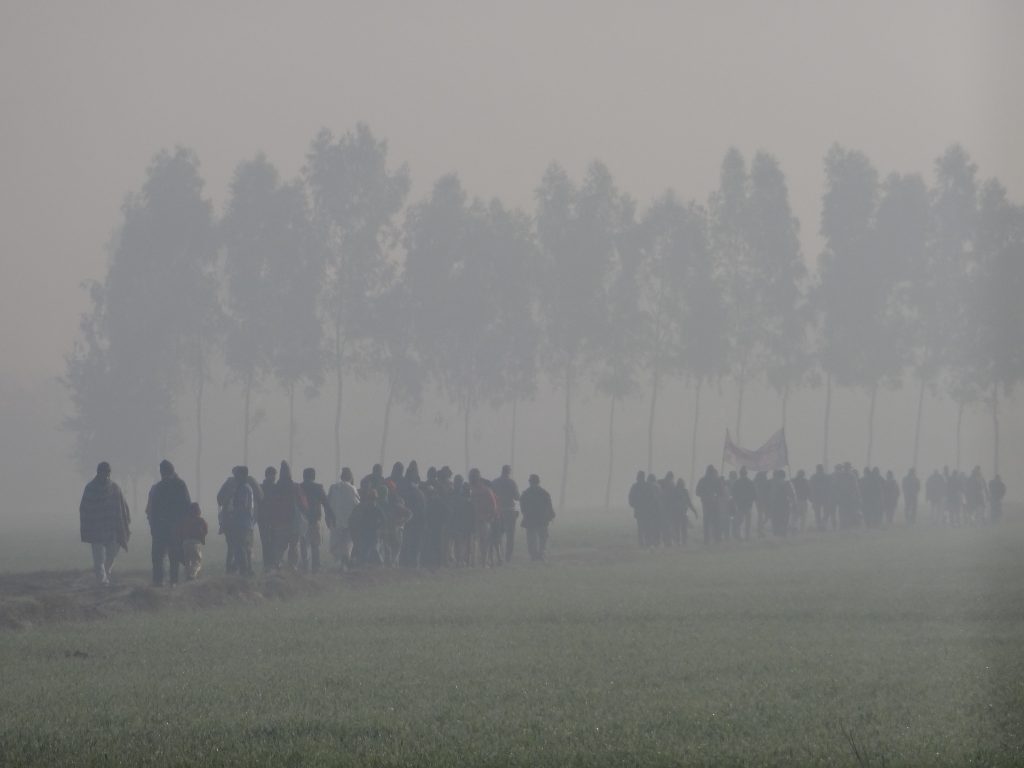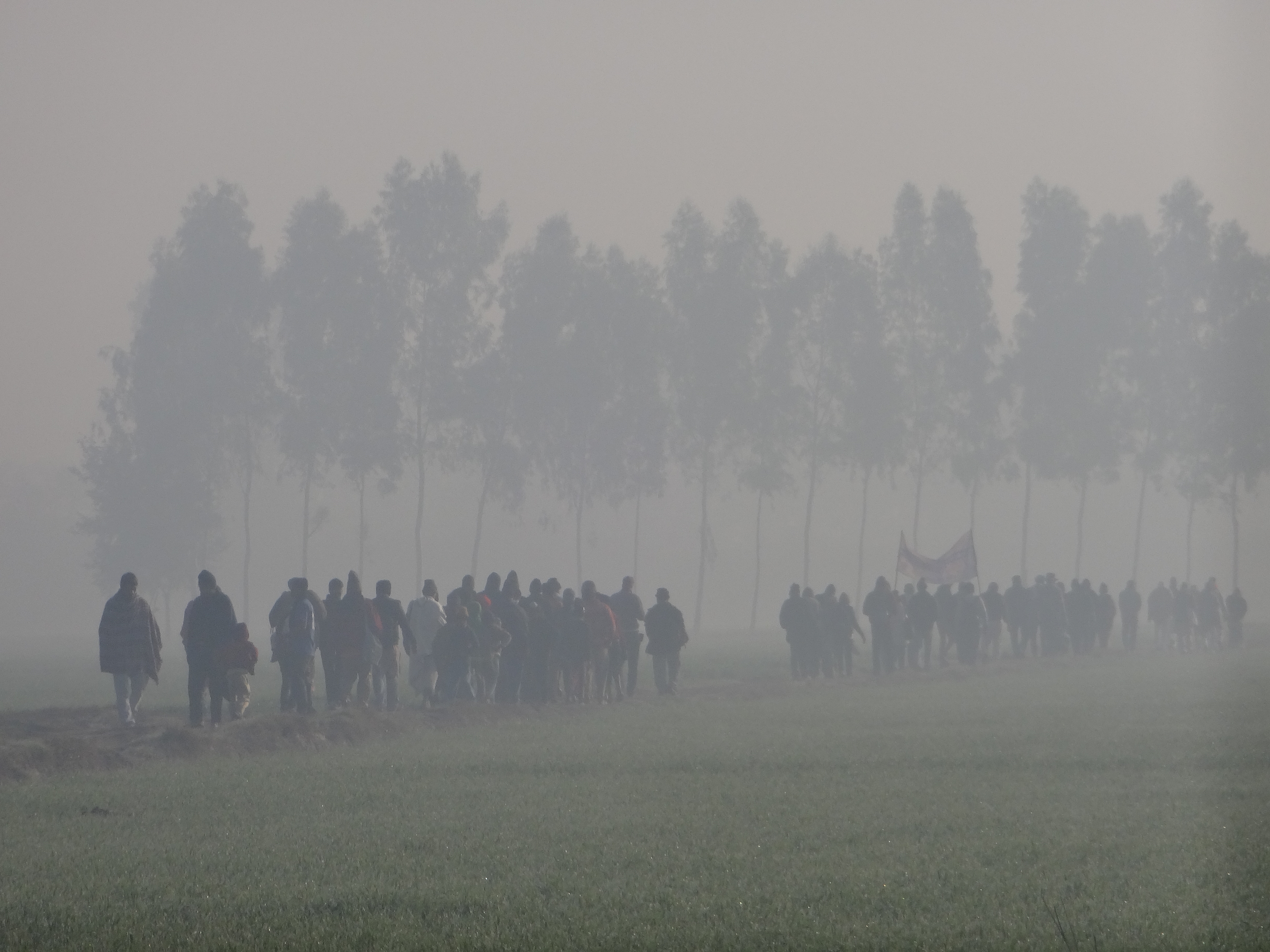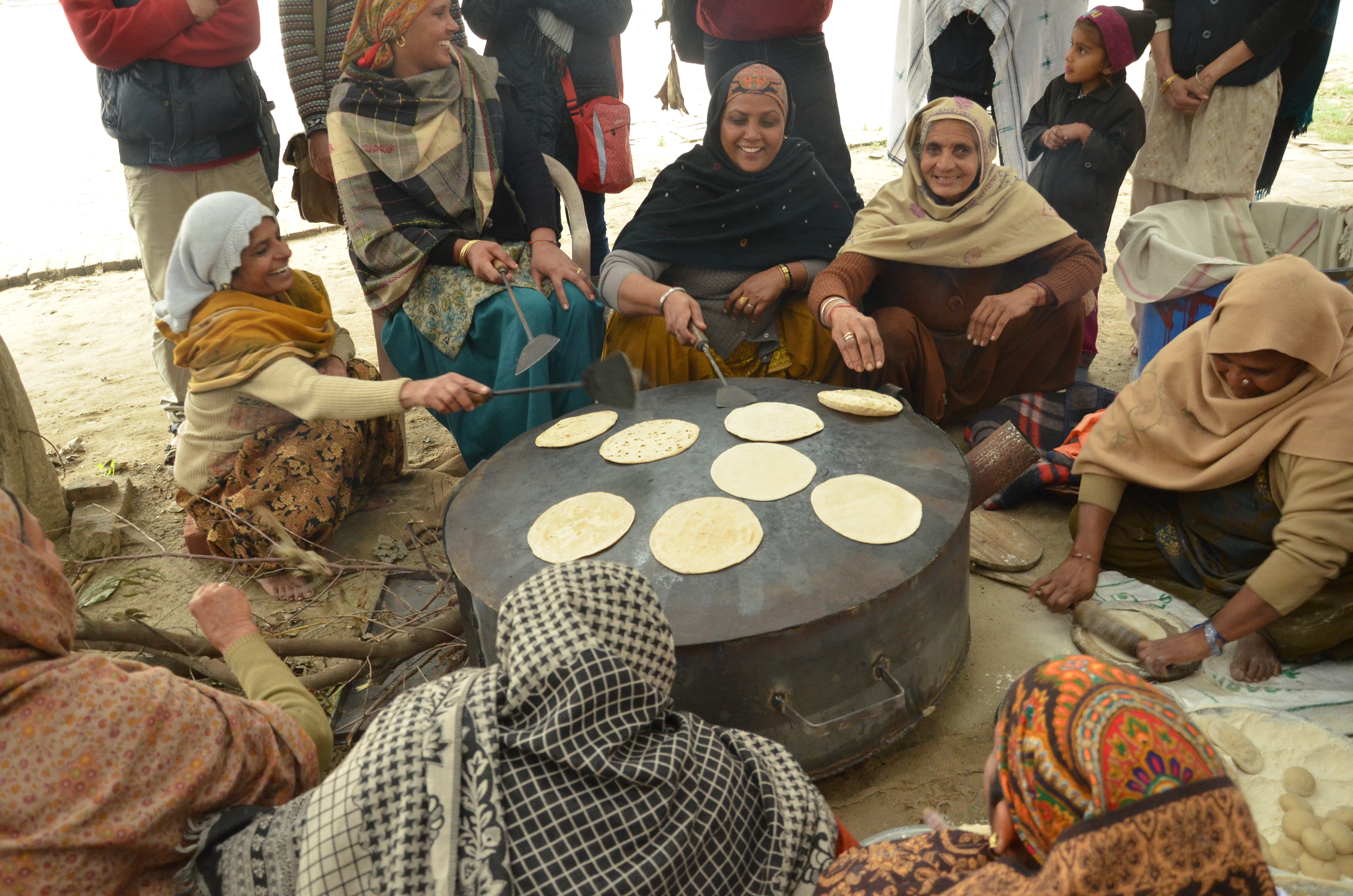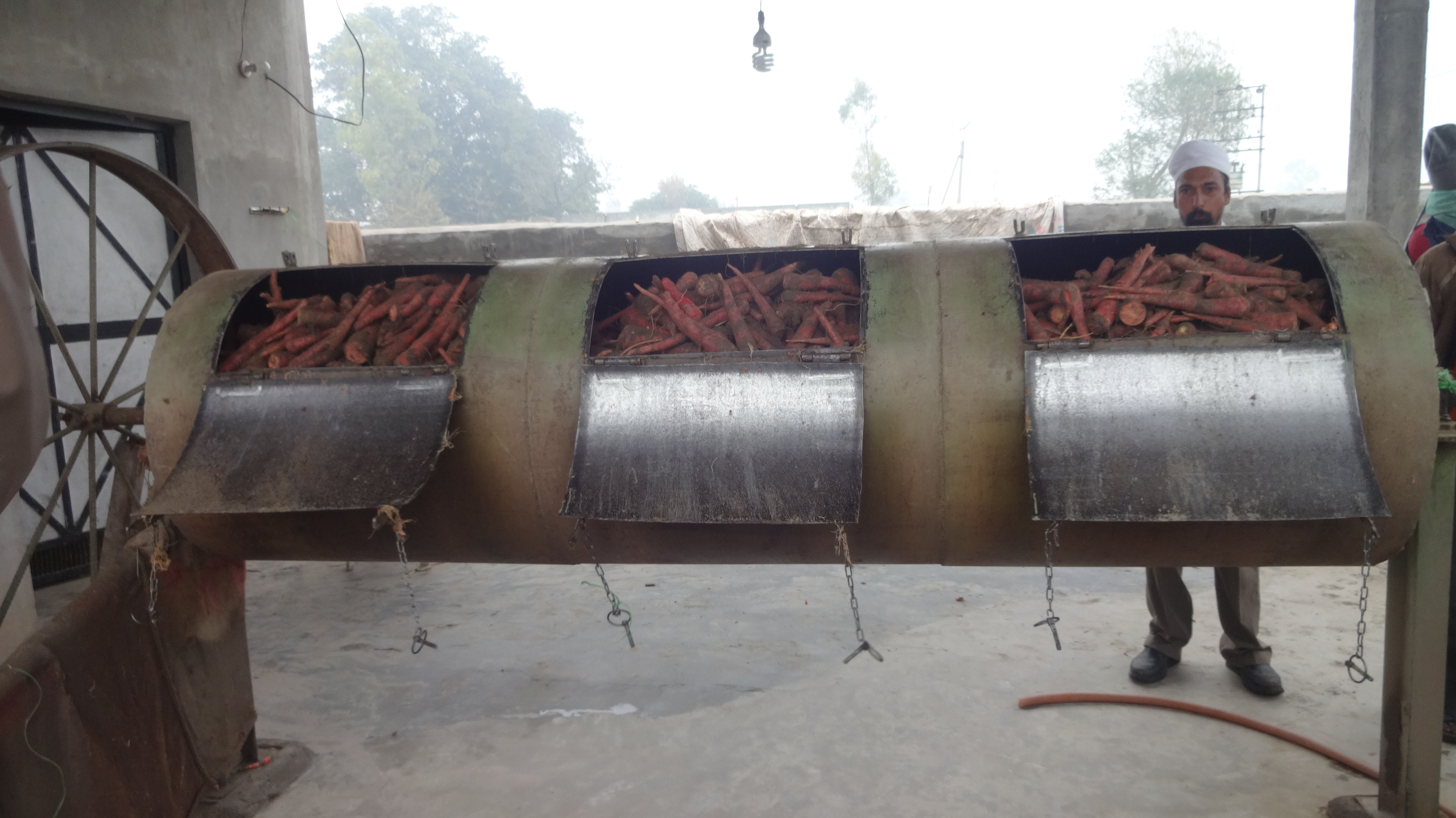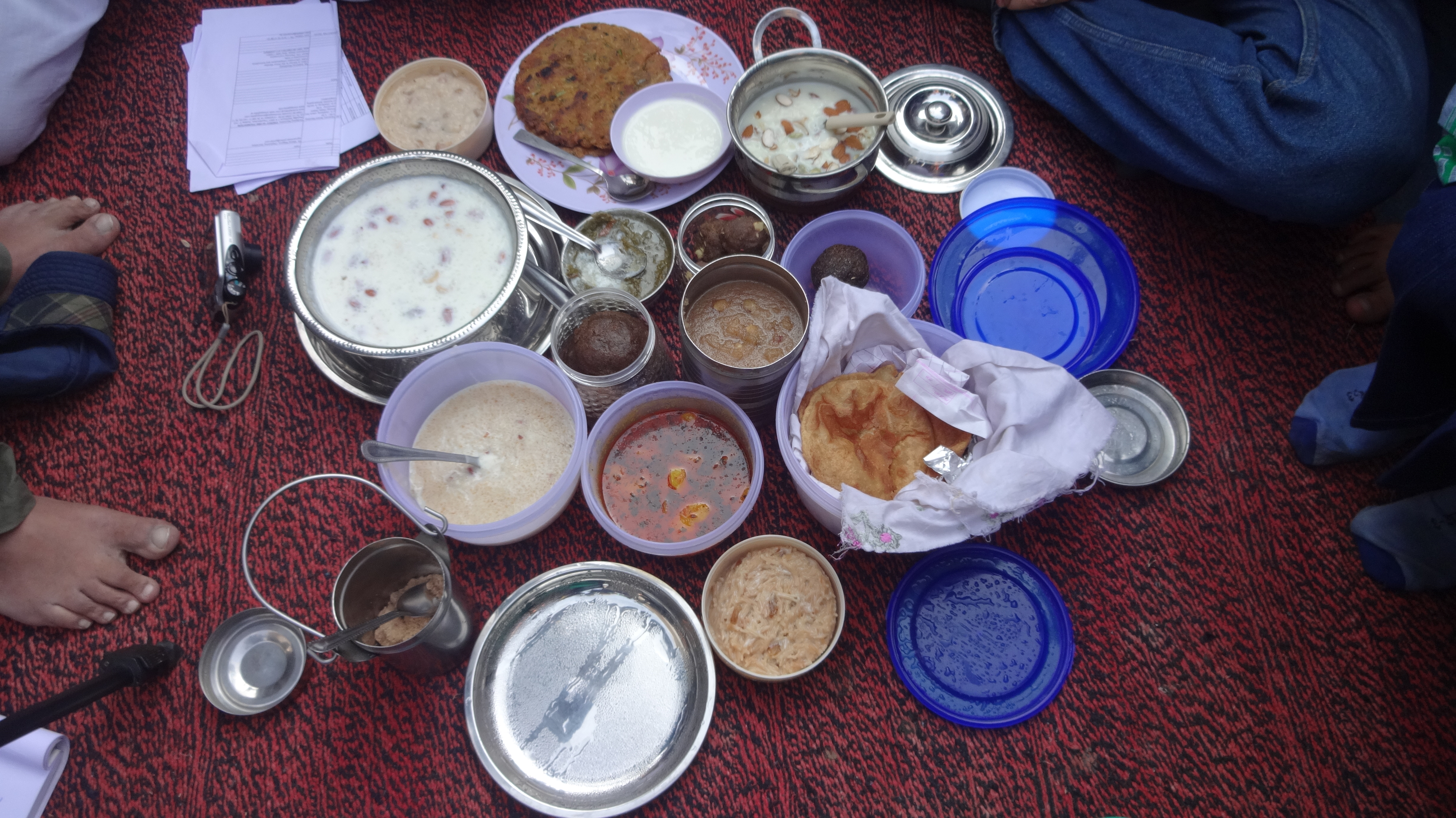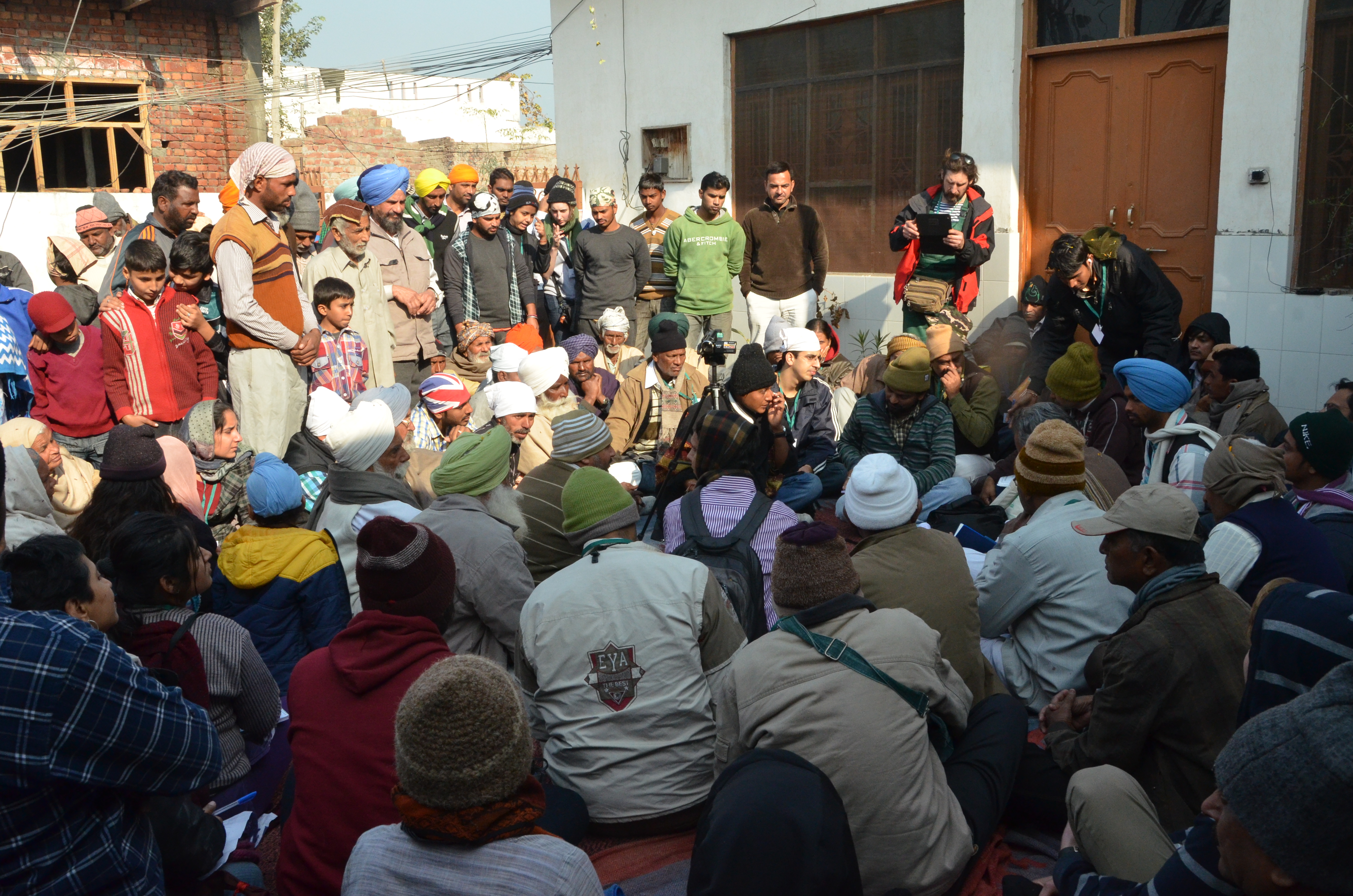Get Next Shodhyatra Update:
Phone:
079-27913293, 27912792
Email:
shodhyatra@sristi.org
32ND SHODHYATRA, PUNJAB
PUNJAB : A LAND OF INNOVATIONS AND IRONIES
The walk through prosperous Punjab was expected to throw pleasant surprises, but we had not expected that it will also uncover so much pain of the communities. We learned first hand how hospitable the Punjabis are. A new benchmark of warmth was created in an otherwise cold winter. Despite modern machineries, encounters of cycle based weeders indicated that workers’ productivity was an issue here. No village had any in situ value addition enterprise. A river cleaned by community efforts shaped by Sant Seechewal inspired us to explore the region. Here is an account of what we saw, learned and are reflecting upon still….walk with us..
In the cradle of green revolution, we did not expect to find so much pain interspersed with prosperity. Walking during the 32nd Shodhyatra in Sultanpur Lodhi Punjab, the prosperity was apparent in most villages. Yet, the poorer villages told a different tale. In some of them, the labourers used similar hand tools that are used in other economically poor pockets of our country and in neighbouring countries like China. The residents of the Bhago Buddha village, which is inhabited by labourers and marginal farmers, showcased a cycle-based weeder (Fig 1) as an example of local creativity but also the limits of local aspirations. The shodhyatris have earlier seen similar weeders in Maharashtra and China. Not a great deal has changed in terms of farm labour productivity in many regions. The research and development institutions as well as local fabricators have made numerous modifications in different machines and developed new ones where needed. However, they have remained rather indifferent towards finding ways to improve productivity of workers so that their wages may go up. Why does inertia persist so much in the case of workers? After all, increase in their productivity would also benefit those for whom they work.
On the first day of the yatra, we came across farmers using chemical pesticides in the fields without wearing any safety gear. It was difficult to understand the absence of good sense to insulate oneself from the toxic chemical pesticides despite such affluence. But, it seemed that the relevant government department or corporations had also spread little awareness, if any, about the ill-effects of using pesticides without protection (Fig 2). The lush green farms showed abundantly available water, but the irrigation channels were clogged with water hyacinth. The community effort apparently, did not yield great results and the state did not care either.
The very reason for our going to this part of the state for a shodhyatra, was to honour and witness the pioneering contribution made by Sant Balbir Singh Seechewal (Fig 4) towards cleaning a river. He had mobilised the local community to clean up the Kaliben river. Today, a long stretch of this river is still kept clean by the communities living along its banks. The volunteers had clogged the mouth of the drains which discharged untreated urban sewage water into the river. Various local authorities greatly helped in complying with the wishes of communities. In every village that we visited, the respect for Sant Seechewal became our passport for a great reception and cooperation. Many years ago, Dr A P J Abdul Kalam, the former President of India (who had visited him personally) had advised us to visit him to study this transformation.
After walking for a few kilometers around Sultanpur Lodhi, we came across a Gurudwara from where Guru Nanak Dev had supposedly taken a dive in the water to emerge out of it miles away. Here a very old ber (Ziziphus mauritiana Lam.) tree is believed to have existed for a few hundred years through primary and secondary growth. After paying our respects to the holy Granth Sahib, the yatris walked further till they came across a small mechanic’s workshop. Initially, the owner did not tell us that he had made any innovative farm machinery. But, after persisting for a while, the mechanic brothers Sukhwinder Singh and Balbir Singh told that a farmer from another village Utar Bhaji had shown them a video of a machine planting gladiolus bulbs (Fig 3 & 5 ). Just by seeing the video, they developed a machine, which performed the same function. We made a note to look for the farmer in the next village who had bought the machine. Apparently, this is the first such machine in the country. But, we could not see the machine in Utar Bhaji, as the farmer had sent the machine to another village.
In Nasirpura village, we came across an interesting machine to wash carrots. After they are dug out, a lot of soil is attached to the carrots. Generally, they are washed manually. The young brothers Baldeep Singh and Jaskirat Singh, inspired by their uncle Harminder Singh, found an answer to this manual task. They made a machine with a drum having a water sprinkler in its hub. But, their challenge was to control the revolutions in the machine to such an extent that it neither peels nor damages carrots. Soil should also not remain attached to the carrots. They hit upon the right speed of 50 rpm after a lot of experimentation, reduced from the RPM of a regular motor around 3,000 (Fig 6) through a large gear.
It is common to see people carrying farm produce on motorcycle driven carts for storage. We also saw a horse cart carrying mounds of salt (Fig 7), which had been brought from Amritsar, where traders got it from Pakistan. The cartman was retailing the salt for animal and human consumption from one village to another.
We took lunch at a dera, which was established by a local holy man. It had a shared cooking hot plate, locally called sanjha chulha , to bake the bread. As we moved along, we came across several small innovations. In most parts of the country, when women use the dough to make bread, the wooden rolling pin (belan) is either kept in a plate or on the ground while putting the bread on the hot plate. Here they had made a small stand in the rolling plate (chakla) to keep it clean (Fig 8). The shops here were also selling double walled cooking stoves with an arrangement for heating water from the waste heat of stoves (Fig 9). When we reached the Bhago Buddha village, we learnt that this village, like many others in the region, was originally inhabited by Muslim peasants. After their migration to Pakistan, the farmers who came back from there were allotted these lands. Bhago Buddha is a small village of poor farmers, but the presence of the cycle weeder had made everybody conscious of the local yearning to improve productivity of workers. The yatris were offered food made with local recipes to taste. There were more women than men in most village meetings.
There were several farmers in the area who used water pumps with small contraptions to ensure that the pumps would stop automatically when the water level went below a particular point. A simple lever with a stone or brick tied on one end will keep the valve of the well open till water was being pumped out. The moment the valve closes, the engine will also stop without any human intervention. Similar contraptions have been developed by people in different regions.
In Bhusawal, while sitting on the ground to have our lunch, the yatris observed a very interesting dispenser for water. A small water tank kept on a trolley was moved by an operator in front of the people wanting to get water (Fig 10). Upon reaching an empty glass, the person operating the trolley would press a clutch, which would release water in the glass. This machine made the whole exercise of offering water to a large number of people during community lunches free from drudgery. Some farmers thought this device could also be used for providing microirrigation to cotton plants often spaced quite wide apart rather than wasting water in the whole channel.
The journey to the next village involved walking through tall reeds and a raised passage apparently designed to prevent flood water from crossing over to the village. This region had been flooded in previous years and one could still see marshy patches. Many farmers seemed to prefer living at their farms though many had a house in the village too.
When we reached Sarupwal village, we came across a bright, young boy, Jahwinder Singh, who had made a model of tractor with tilting cart that used injection syringes for creating pneumatic pressure. He had also made models of chaff cutter, JCB and other small devices (Fig 13). Such interest may eventually help him become an engineer or a mechanic, depending upon what kind of opportunities society makes available to such talented kids. Our society has given far more weightage to academic excellence compared to hands-on skill and that is reflected in the type of society that we are becoming. Maybe, there is still a time to change.
When we reached the farm of Gurdayal Singh and Vairam Singh, we came across an onion variety selected by the farmers (which bore resemblance to a stem onion variety) that produced about two dozen bulbs per every bulb planted in the field (Fig 11). To protect chilli seedlings in their farm from cold and frost attacks, the brothers constructed a straw shade (Fig 12).
In every village, the yatris were received with great affection and attention. In some villages, local musical groups played music and the young folks performed bhangra to welcome the yatris. There was apparently a competition among the villagers to outperform each other in hospitality. The yatris also saw examples of local crafts at these village meetings.
One of the painful pleas that we heard in almost every village meeting was the issue of drug addiction among youth and children. The women were extremely sad that the youth were being lured into drug addiction. Apparently, there is a conspiracy to mislead the young generation on a self-destructive path. The state government has proved to be completely ineffective in checking the smuggling of drugs from across the border. We heard many more depressing stories about the complicity of some in the administration in spreading this menace.
In several village meetings, farmers shared the last surviving bits of traditional knowledge. A farmer shared how feeding two kilograms of coriander seed or greens to animals affected by mastitis helps treating the disease. Later, some researchers found that scientists from Iraq had observed a similar practice and published a paper on this issue. They found the coriander extract to be effective in treating the disease when applied externally. Knowledge Networks of this kind need to be created urgently so that scientific assessment can take place of all viable and effective traditional knowledge. NIF and the natural product lab of SRISTI on a small scale are trying to work towards this end.
More than four decades of green revolution has suppressed many sustainable low-cost technological breakthroughs both of traditional as well as contemporary origin. However, not everything is lost. This knowledge can still be salvaged. In every village, the idea of village knowledge register was discussed. Information about innovations from other parts of the country was also shared. In addition, small booklets with already existing practices were distributed. Villagers showed great interest in the demonstration of the multi-purpose food processing machine that Dharambir had brought with him.
Despite being so close to Jalandhar city, not a single village had any unit for processing agricultural produce or food. The entire economy revolved around primary production. However, the hunger for new knowledge and non-chemical based herbal pesticides was quite high. And yet, there were so few examples of such trials in the region. Farmers had big bungalows, but they also had big worries about their children. The meaning of development and progress seems to have gotten distorted because of such contradictions.
Perhaps, the most peculiar sights were the water tanks atop houses in all kinds of shapes and sizes – there were tanks modelled on flowers, aeroplane, birds, and tractors among others .
The yatris were left with warm memories of rich hospitality, green farms and beautiful aroma of mustard in the field. But, the impediments to pursue the spirit of sustainability in our chosen path of development were also quite evident. A turnaround was needed and we were not sure whether the trigger would come from within or without.
The various educational institutions in the area did not seem much connected with the problems of the region. However, Punjab Technical University and a few other institutions were making valiant efforts to build the linkage between formal and informal sectors. There is a hope that if Punjab turns around on a sustainable path, the rest of the country would follow, as it did during the green revolution path. The question is: will Punjab make the effort to turn over a new leaf in its development path?
FLICKR GALLERY
